Physical Medicine is a medical specialty focused on restoring functional abilities and enhancing the quality of life for individuals with disabilities or impairments resulting from various conditions such as neurological disorders, musculoskeletal injuries, and chronic pain syndromes. In healthcare, PM&R plays a crucial role in providing comprehensive care to patients by employing a multidisciplinary approach that encompasses physical therapy, occupational therapy, speech therapy, and other modalities to maximize independence and promote wellness. The scope of PM&R extends beyond mere treatment to encompass prevention, assessment, diagnosis, and the development of individualized care plans tailored to meet the unique needs of each patient. With a dedicated team of physicians, therapists, nurses, and other healthcare professionals, PM&R aims to address the physical, psychological, and social aspects of rehabilitation, ultimately enabling patients to achieve their optimal level of functioning and participation in society.
Historical Background
The evolution of Physical Medicine and Rehabilitation (PM&R) as a distinct medical specialty traces back to the early 20th century, emerging in response to the rehabilitation needs of soldiers injured during World War I. However, it wasn’t until the mid-20th century that PM&R began to formalize as a recognized field within medicine. Key milestones in its development include the establishment of the first rehabilitation centers and the formation of professional organizations such as the American Congress of Rehabilitation Medicine (ACRM) in 1927 and the American Academy of Rehabilitation and Physical Medicine in 1938. These organizations played pivotal roles in advancing research, education, and standards of practice in PM&R. Influential figures like Dr. Howard A. Rusk, known as the “father of rehabilitation medicine,” made significant contributions by advocating for the comprehensive rehabilitation of individuals with disabilities and pioneering innovative rehabilitation techniques. Their efforts laid the foundation for the modern practice of PM&R, emphasizing the importance of interdisciplinary collaboration and patient-centered care in optimizing functional outcomes and enhancing the quality of life for individuals with disabilities.
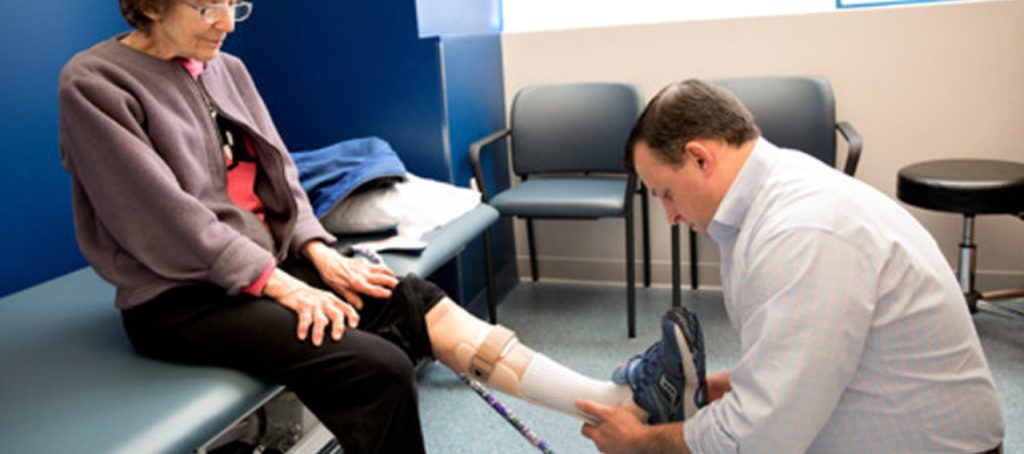
Core Principles And Goals Of PM&R
The core principles and goals of Physical Medicine and Rehabilitation (PM&R) are centered around the holistic care of individuals with disabilities or impairments. Firstly, PM&R aims to restore functional abilities through targeted therapies and interventions, helping patients regain mobility, strength, and coordination. Secondly, the specialty focuses on maximizing independence and enhancing the overall quality of life for patients by addressing the physical, psychological, and social aspects of rehabilitation. This involves empowering individuals to perform daily activities, participate in meaningful roles, and engage in social interactions to the fullest extent possible.
Additionally, PM&R emphasizes a multidisciplinary approach to patient care, involving collaboration among physicians, therapists, nurses, and other healthcare professionals to develop comprehensive treatment plans tailored to each patient’s unique needs. Finally, PM&R is committed to preventing disability and promoting wellness through education, lifestyle modifications, and early intervention strategies aimed at minimizing the impact of injuries, illnesses, or chronic conditions on long-term functioning and overall health. These principles underscore the specialty’s dedication to optimizing functional outcomes and fostering long-term well-being for individuals across the lifespan.
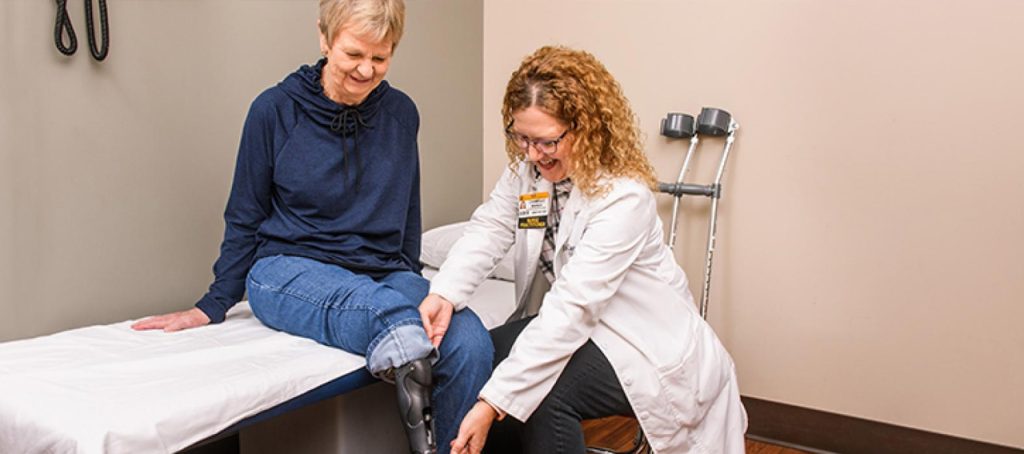
Conditions Treated In Physical Medicine And Rehabilitation
Rehabilitation and physical medicine address a wide range of conditions across various medical domains. Among the common conditions treated in PM&R are neurological disorders, including stroke, spinal cord injury, and traumatic brain injury, where rehabilitation plays a crucial role in restoring lost function and facilitating recovery. Additionally, PM&R specializes in managing musculoskeletal conditions such as osteoarthritis, rheumatoid arthritis, and fractures, focusing on restoring mobility, reducing pain, and improving overall function. Neuromuscular disorders like multiple sclerosis and muscular dystrophy also fall within the purview of PM&R, with interventions aimed at enhancing muscle strength, coordination, and functional abilities. Furthermore, PM&R is integral to pain management, addressing chronic pain syndromes and complex regional pain syndromes through a combination of therapeutic modalities, medication management, and interventional procedures to alleviate discomfort and improve patients’ quality of life. By comprehensively addressing these diverse conditions, PM&R plays a vital role in optimizing functional outcomes and enhancing the overall well-being of individuals with disabilities or impairments.
Diagnostic And Treatment Modalities
In rehabilitation and physical medicine, a variety of diagnostic and treatment modalities are utilized to address the unique needs of patients with disabilities or impairments. Physical therapy (PT) focuses on improving mobility, strength, and flexibility through exercises, manual therapy techniques, and specialized equipment to enhance functional abilities and promote recovery. Occupational therapy (OT) aims to facilitate independence in daily activities such as self-care, work, and leisure pursuits by addressing cognitive, motor, and sensory challenges through therapeutic interventions and environmental modifications. Speech therapy (ST) is essential for individuals with communication disorders or swallowing difficulties, utilizing exercises, strategies, and assistive technologies to improve speech, language, and swallowing function. Assistive devices and adaptive equipment play a crucial role in enhancing mobility, communication, and independence for individuals with disabilities, ranging from mobility aids like wheelchairs and walkers to communication devices and home modifications. Pharmacotherapy involves the use of medications to manage symptoms such as pain, spasticity, or muscle weakness, complementing other rehabilitation interventions to optimize patient outcomes. Interventional procedures such as nerve blocks and epidural injections are employed for pain management, targeting specific pain generators to alleviate discomfort and improve function. In some cases, surgical interventions like tendon transfers and joint replacements may be necessary to correct musculoskeletal or neurological impairments and restore optimal function. By employing a multidisciplinary approach and utilizing these diverse modalities, PM&R aims to tailor treatment plans to each patient’s specific needs, optimizing outcomes and enhancing their overall quality of life.
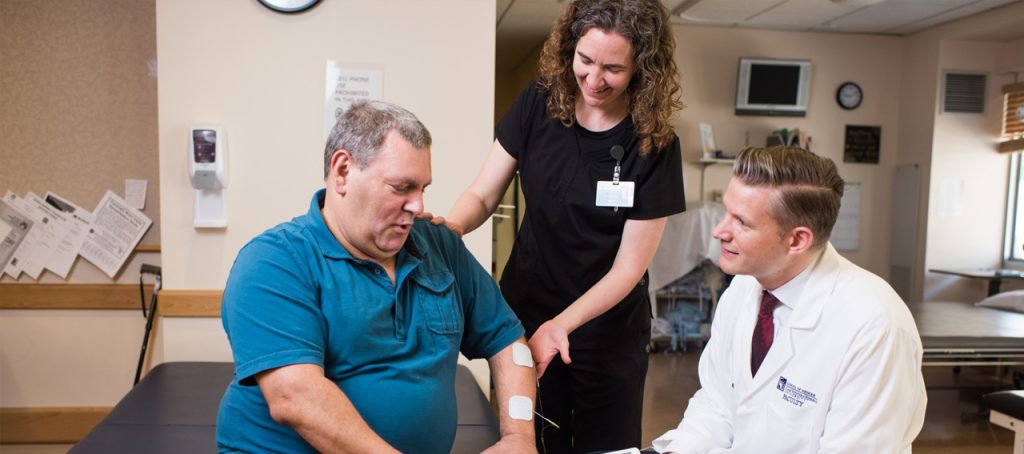
Rehabilitation Team
The rehabilitation team in Physical Medicine and Rehabilitation (PM&R) consists of a diverse group of healthcare professionals dedicated to providing comprehensive care and support to individuals with disabilities or impairments. Physicians specializing in PM&R, also known as physiatrists, lead the team, overseeing patient care, coordinating treatment plans, and prescribing necessary interventions. Physical therapists play a crucial role in promoting mobility, strength, and function through targeted exercises, manual therapy techniques, and assistive devices. Occupational therapists focus on enhancing independence in daily activities by addressing cognitive, motor, and sensory challenges and facilitating adaptive strategies and environmental modifications.
Speech-language pathologists specialize in evaluating and treating communication disorders and swallowing difficulties, utilizing exercises, techniques, and assistive technologies to improve speech, language, and swallowing function. Rehabilitation nurses provide skilled nursing care, monitor patient progress, and assist with activities of daily living, ensuring patients receive holistic support throughout their rehabilitation journey. Psychologists and neuropsychologists offer psychological assessment and therapy to address emotional, cognitive, and behavioral challenges that may arise during rehabilitation, promoting adjustment and coping strategies. Social workers and case managers facilitate access to community resources, coordinate care across healthcare settings, and provide support to patients and their families, addressing social and logistical barriers to rehabilitation. By collaborating as a cohesive team, these professionals strive to optimize functional outcomes, enhance quality of life, and empower individuals to achieve their maximum potential in recovery and participation.
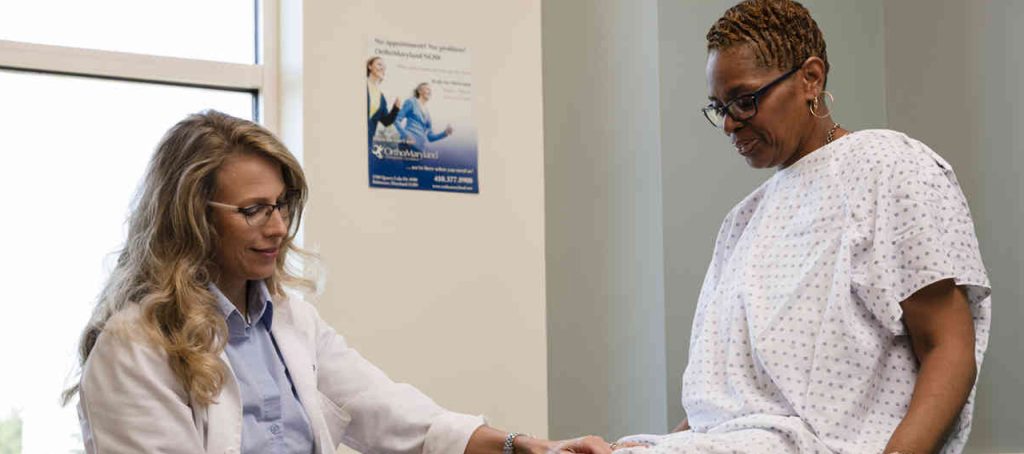
Patient Assessment And Individualized Care Plans
In rehabilitation and physical medicine, patient assessment and the development of individualized care plans are essential components of effective treatment. The process begins with a comprehensive initial evaluation, where the patient’s medical history, functional status, goals, and barriers to recovery are thoroughly assessed. This evaluation serves as the foundation for establishing realistic goals in collaboration with patients and their families, ensuring that the treatment plan aligns with their preferences, priorities, and expectations. Throughout the rehabilitation process, regular reassessments are conducted to track progress, identify challenges, and modify treatment plans accordingly. This dynamic approach allows for adjustments to be made based on evolving needs and responses to interventions, optimizing outcomes. Additionally, coordination of care across disciplines and settings is essential to ensuring continuity of care and the integration of services. This involves communication and collaboration among healthcare professionals, as well as coordination with community resources and support networks, to provide comprehensive and seamless care for patients throughout their rehabilitation journey. By prioritizing thorough assessment, goal setting, ongoing reassessment, and coordinated care, PM&R strives to provide individualized and effective rehabilitation interventions that maximize functional outcomes and enhance the overall quality of life for patients.
Challenges And Advances In PM&R
In Physical Medicine and Rehabilitation (PM&R), several challenges and advances shape the landscape of patient care. Access to specialized care and rehabilitation services remains a significant challenge, particularly for underserved populations or those in remote areas, leading to disparities in healthcare outcomes. However, advances in telemedicine and remote monitoring offer promising solutions to improve access and delivery of care, especially in areas with limited resources. The integration of technology in rehabilitation, such as robotics and virtual reality, presents exciting opportunities to enhance therapy effectiveness, promote engagement, and simulate real-world environments for functional training.
Moreover, ongoing research and innovation in neurorehabilitation and musculoskeletal rehabilitation drive advancements in treatment modalities, rehabilitation techniques, and assistive technologies, leading to improved outcomes and quality of life for patients with neurological and musculoskeletal conditions. Despite these advancements, addressing the needs of diverse patient populations remains a challenge, including cultural, linguistic, socioeconomic, and disability-related factors. To overcome these challenges, PM&R must continue to prioritize inclusivity, cultural competency, and patient-centered care, ensuring equitable access to high-quality rehabilitation services for all individuals, regardless of background or circumstance. Through ongoing collaboration, innovation, and advocacy, PM&R aims to overcome these challenges and further advance the field to meet the diverse needs of patients and improve overall healthcare outcomes.
Future Directions And Opportunities
Looking toward the future, Physical Medicine and Rehabilitation (PM&R) is poised to embrace new directions and opportunities that will shape the delivery of healthcare. Firstly, there is a growing emphasis on preventive medicine and wellness promotion within PM&R, recognizing the importance of proactive interventions to mitigate the onset and progression of disabilities and chronic conditions. This shift towards prevention underscores the specialty’s commitment to optimizing health outcomes and improving overall population health. Secondly, the increasing role of telemedicine and remote monitoring presents promising opportunities to enhance access to care, facilitate ongoing monitoring, and deliver personalized interventions, particularly for patients in underserved or remote areas.
As technology continues to evolve, PM&R can leverage telemedicine to expand its reach and effectiveness in delivering rehabilitation services. Additionally, advancements in regenerative medicine and tissue engineering hold immense potential to revolutionize treatment approaches within PM&R, offering novel therapies for tissue repair, regeneration, and restoration of function. By harnessing these cutting-edge technologies, PM&R can further enhance rehabilitation outcomes and address previously untreatable conditions. Lastly, collaboration with other medical specialties is essential for comprehensive patient care, as many conditions require a multidisciplinary approach. By fostering partnerships with specialties such as neurology, orthopedics, and pain management, PM&R can ensure holistic and integrated care that addresses the complex needs of patients across the continuum of care. Through these future directions and opportunities, PM&R is poised to continue advancing the field, improving patient outcomes, and promoting overall health and well-being for individuals with disabilities or impairments.
Conclusion
In conclusion, physical medicine and rehabilitation (PM&R) stands as a vital specialty within healthcare, playing a pivotal role in restoring function, enhancing quality of life, and promoting wellness for individuals with disabilities or impairments. Its significance lies in its holistic approach to patient care, addressing physical, psychological, and social aspects of rehabilitation to optimize outcomes and foster independence. As we move forward, there is a pressing need for continued advancement and support of PM&R services to meet the evolving needs of patients and society. This entails investment in research, education, and infrastructure to further enhance the delivery of rehabilitation care and expand access to services. Moreover, interdisciplinary collaboration remains paramount in ensuring comprehensive and effective care, as the complexity of many conditions requires expertise from multiple specialties. By prioritizing patient-centered care and fostering collaboration among healthcare professionals, PM&R can continue to make significant strides in improving the lives of individuals with disabilities and promoting health and well-being for all.
Experience expert care at South Texas Spine & Joint Institute for all your physical medicine and rehabilitation needs. Let us help you regain mobility, reduce pain, and improve your quality of life. Schedule your appointment today and start your journey towards optimal health and wellness
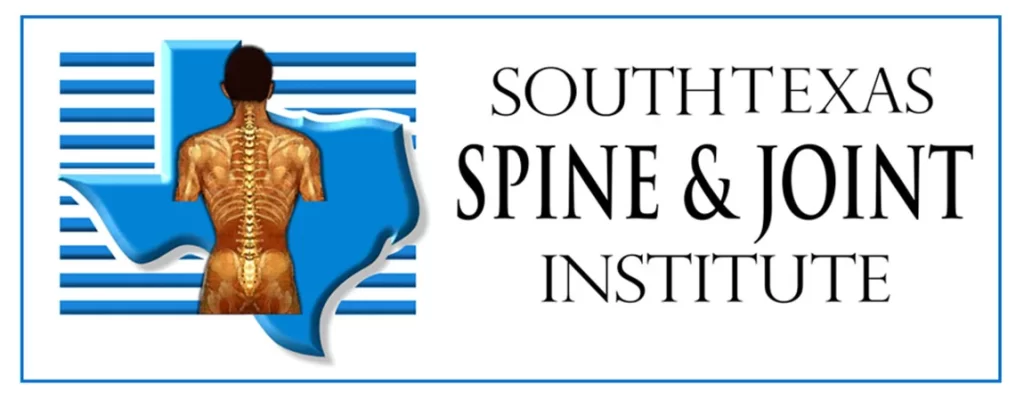
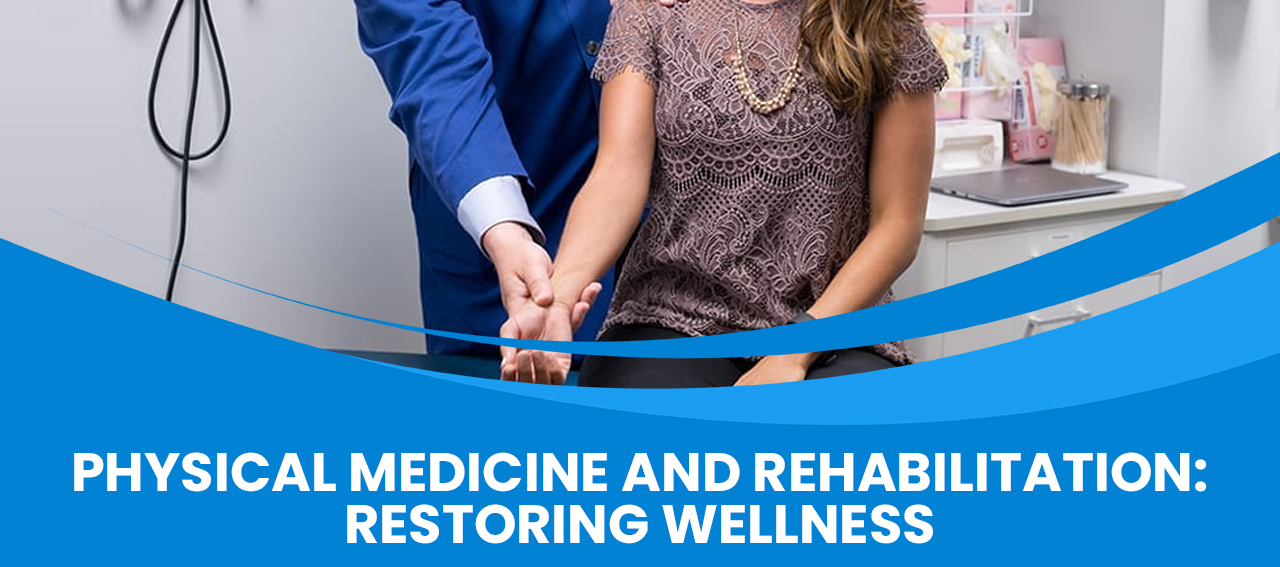
No comment yet, add your voice below!